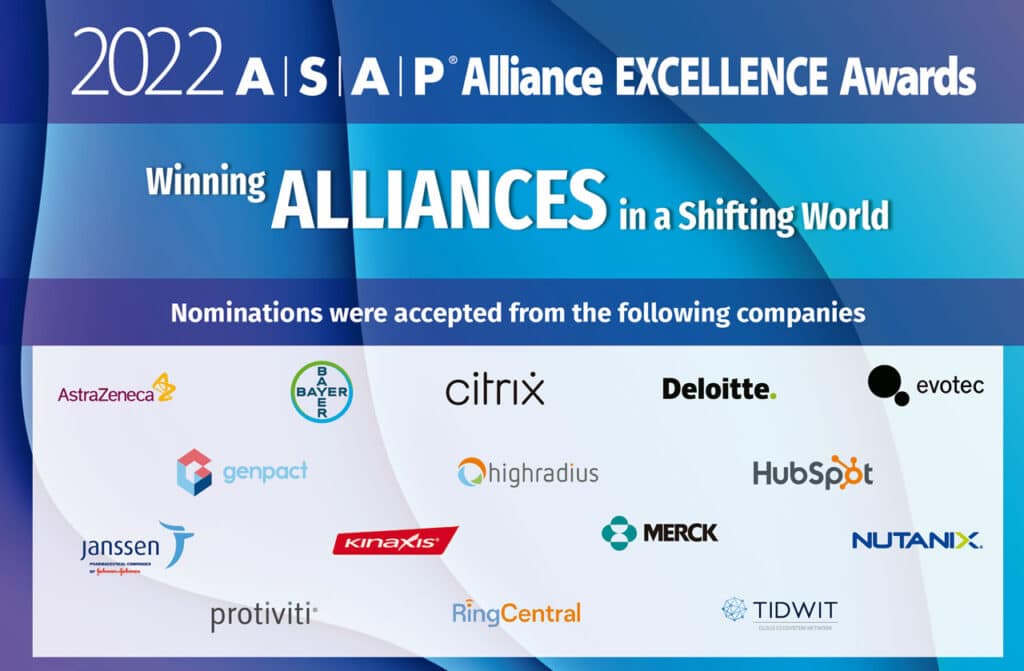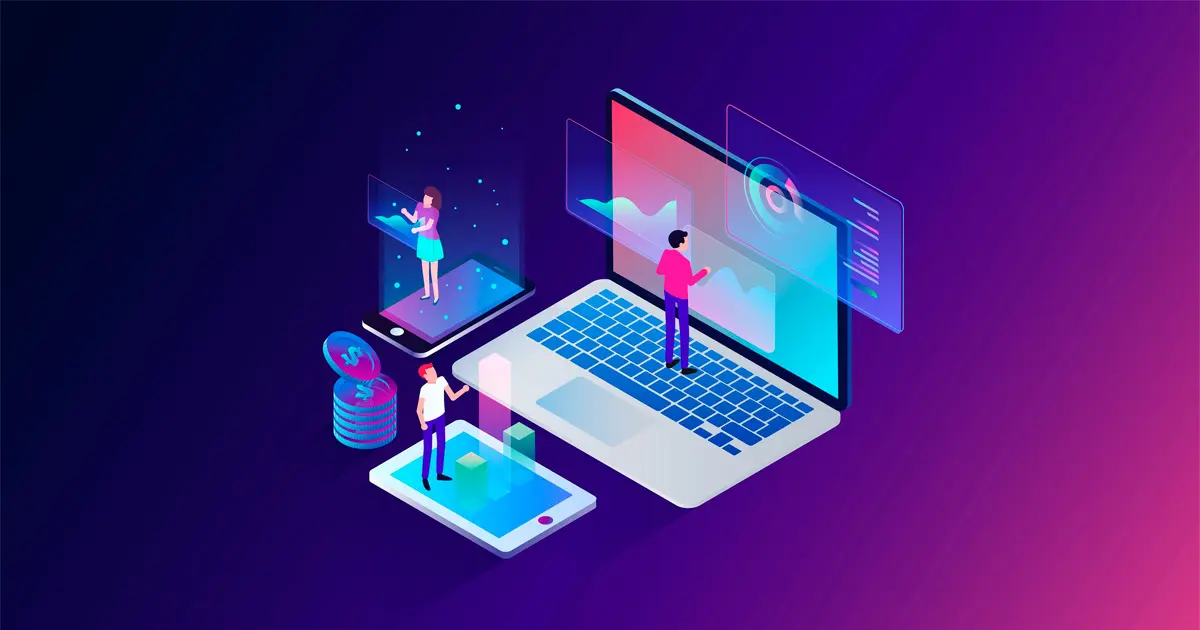Last year, we revealed the newest trend in technology partner enablement: self-guided journeys—prescriptive, sequenced, customized, and largely automated combinations of classes, trainings, certification paths, educational documents, and other resources vendors put together to help their new partners create, sell, and market their solutions. The broad idea of these journeys is fairly simple, even if the task of assembling them is not: optimize your partners’ time and resources by providing them with the tools and instruction they need to bring innovation and profits to bear—the ultimate partnering hack! (See “Self-Guided Tours in Partnerland: Prescriptive, Tailored, Automated Journeys Are Taking Partner Enablement to a New Level,” Strategic Alliance Quarterly, Q3 2021.)
But as is often the case with tech—and life—solving one problem creates new challenges. Large companies with thousands of partners across several technology areas and vertical markets can’t conceivably tailor dozens, if not hundreds, of technical, sales, and marketing enablement paths for every ally. Global 200 companies like Microsoft, Amazon, Google, and Salesforce that are adding hundreds of partners each month would be particularly hard-pressed to do this at scale. Ditto for the world’s largest global systems integrators (GSIs), such as Capgemini, Deloitte, Accenture, and PwC. This already confounding problem gets exponentially more complex when you consider that these colossal independent software vendors (ISVs) and GSIs all partner with each other, too, and they would thus have to duplicate mass-scale enablement efforts more than a dozen times over in their respective mega-alliances.

So what to do? Over the past few years, these tech giants have turned to a smaller, lesser-known partnership software platform provider named TIDWIT to help with this conundrum. This emerging entrant into the fast-growing alliance and ecosystem enterprise software market has helped the world’s largest ISVs and GSIs boost their operations by streamlining the process of delivering sales, technical, and marketing education and training to thousands of employees who need these resources to optimize partner offerings. Starting with an implementation that connected Microsoft’s partner organization with nearly 300,000 individuals at GSIs, such as Accenture, Capgemini, and Dell Technologies, TIDWIT is now enabling almost a million tech-company employees on behalf of AWS, Google, Salesforce, Adobe, ServiceNow, Snowflake, Intel, Capgemini, IBM, Accenture, and Infosys, among others. For its success in helping the world’s largest tech players scale partner enablement activities, TIDWIT was nominated for a 2022 ASAP Alliance Excellence Award in the brand-new Best Ecosystem Solution category.
Readiness Is All
For GSIs, the speed and effectiveness of technical enablement programs often correlates to bottom-line success. The number of people involved in alliances between Global 1,000 ISVs and GSIs can spike to eight or nine figures, so it’s important that employees of the latter who are responsible for development, integration, and implementation of the former’s software can hit the ground running when customers send out RFPs. In other words, when large private or public organizations initiate new projects in emerging areas, such as cloud, IoT, blockchain, or AI, they want to know which candidates have more personnel trained in that particular technology area and vertical industry. For example, if one GSI can demonstrate that it has several dozen more people certified in Microsoft’s Azure and government solutions than its competition, a department of motor vehicles or another similarly large agency might be more inclined to choose that integrator to spearhead its efforts to convert in-person, paper-based government services into new cloud-based digital offerings.

“Readiness is a leading [success] indicator for revenue,” said Will Yafi, TIDWIT’s chairman and CEO.
Tens of Thousands of Documents and Users, One API
A GSI’s aggregate technical knowledge doesn’t just foreshadow how quickly it can get a project off the ground; it also predicts how well it will keep the initiative afloat moving forward. With new cloud-based product cycles coming every few months, product engineers have to know how to evolve with the times—and the solutions. If it wasn’t complicated enough to enable thousands of people for one large ISV, imagine how cumbersome it would be to recreate that exercise across several dozen leading software providers that have a significant material impact on quarterly and annual revenue.
Until recently, the three main avenues for integrating product development efforts were to 1) try to get your partners to visit your partner portal, 2) develop an API to connect with each individual partner’s system, or 3) arrange for a third party to connect the company and partner with software development kits, testing areas, and associated collateral. The first option was too burdensome for partners—it’s too much to expect partner employees to sift through the thousands of classes, how-to videos, webinars, logos, messaging documents, technical manuals, white papers, and other materials housed on these sites. Meanwhile, it would be too complicated to develop, integrate, maintain, and scale proprietary APIs for every company, and too expensive to offload that responsibility to a third party.
That’s where a company like TIDWIT comes in. A GSI or software provider only has to complete this API exercise once. If an integrator connects to the TIDWIT platform, it can instantly integrate with the ecosystems of Microsoft, AWS, Google, Salesforce, IBM, Intel, Adobe, VMware, Dell, and several other well-known software companies. The reverse is also true in that by connecting to TIDWIT, an ISV can integrate with those aforementioned GSIs that have done the same.
Yafi estimates that this hub-and-spoke, “one-to-many” model enabled Microsoft to deliver more than 40,000 digital assets to almost 300,000 GSI employees worldwide, saving its partners $15 million collectively in enablement costs. He also stressed that the software’s flexibility was a factor as well; customers could easily configure TIDWIT to their respective processes and integrate them with their existing back ends.
“The partners have imperatives that cut across multiple vendors, and they need ecosystem solutions to do the same, because that’s how they work,” said Yafi. “The future is going to go beyond that single portal/PRM to being a nodal ecosystem approach. ‘I’ve got an ecosystem, you have an ecosystem. Our ecosystems will connect with each other. Don’t impose your portal on me.
I won’t impose my systems on you.’”

He compared it to blockchain in that an ecosystem approach to partner software is about “democratizing the sharing of knowledge to organizations that can easily connect to one another and start consuming what they want, however they want, when they want, and to the scale that they want within a compliant environment.”
From Shaky and Choppy to Smooth: Dashboard Blends Data into a Unified User Experience
Once companies have established themselves on the TIDWIT network, they have access to a plethora of stats and figures that help measure their progress in enabling partners in concrete numbers. In the old world, companies might be forced to rely on shaky internal reporting and sporadic spreadsheets collected from partner organizations detailing the number of certifications, webinar registrations, completed courses, objectives met, and content page views. Now, however, TIDWIT is able to deliver these metrics on a central dashboard, from which its customers can compare all of their partners in one view.
“[The] data is being collected from a multivendor perspective in real time. This is impossible to do without an ecosystem enablement tool,” said Yafi. “Otherwise, the world is chopped up for them. If I’m IBM, and I need to deal with 20 different providers, that means I have 20 different user experiences, reporting mechanisms, standards, types of coursework and searches. You multiply it by ‘n’ vendors, [and] it’s a nightmare. With TIDWIT, the user experience gets unified. The flows, metrics, data, and reporting—everything becomes unified as one ecosystem.”

In addition, they collect this data—much of which encompasses employee-related personally identifiable information (PII)—in a manner that adheres to major data privacy statutes, such as the EU’s General Data Protection Regulation (GDPR) and the California Consumer Privacy Act (CCPA).
The Learning Path to New Records
The company also provides preprepared, customizable marketing enablement tools to help clients boost those dashboard numbers. Clients can tailor a marketing template and launch a full-scale campaign in less than two hours, a process that once took six to eight weeks. In one instance, and at the height of the pandemic, Microsoft empowered Capgemini to quickly deploy one aimed at persuading its sales and product people to attend virtual “Cloud Week” training events to expand their skills and knowledge in Microsoft’s latest Azure solutions. By the end of November, Microsoft’s TIDWIT dashboard revealed that it had netted close to 11,500 registrations, 2,950 learning path completions, and 12,830 learning path enrollments of Capgemini employees over the course of the previous 11 months, all of which represented increases of three- or four-digit percentage points over previous years.
The rest of TIDWIT’s customer base has registered some pretty impressive technical enablement figures as well. Accenture enabled more than 20,000 employees in less than a quarter, which set a new Guinness World Record, according to Microsoft.

IBM recently became the first company to enable over 100,000 employees via TIDWIT. And while the number of employees being educated in these programs falls in the five- or six-figure range, the number of alliance managers required to administer these ecosystem platforms is in the single digits—Microsoft’s enablement operation on TIDWIT is fully automated, while IBM, Capgemini, and Accenture only need one or two admins at most to run ecosystems that touch more than 40,000 employees on average.
Constant Change Requires a Stable Platform
This efficiency will be paramount as ecosystems continue to grow in terms of customers, partners, and technical complexity—tech companies will be even less eager to develop and roll out enablement programs entirely in house. Companies already have their hands full refreshing their actual training and background materials in today’s faster-moving subscription economy; they hardly want to add maintaining their own ecosystem enablement software to their task lists.
“If I’m tasked with skilling my organization, and I’m developing a simple course, it could take two or three months and will cost somewhere in the range of $10K to $20K per course. Multiply all the courseware needed to master a cloud platform such as Microsoft Azure and that will require dozens if not hundreds of different learning tracks, certifications, areas of expertise, and marketing collateral. Then consider that all of this is constantly changing—because back in the day, we would have two- to three-year release cycles, whereas now it’s down to two to three weeks,” said Yafi. “Then, once I get over that hump, I now have to come up with skilling solutions not only for Microsoft, but also Salesforce, AWS, Google, SAP, Snowflake, and ServiceNow. How the heck would I be able to develop something internally [for each]? It’s impossible, which is why I think ecosystem enablement will soon become indispensable.”
In the meantime, while TIDWIT continues to help clients break records, it will have to wait another month to see if it will add hardware of its own in the form of a 2022 ASAP Alliance Excellence Award. Will the ecosystem software provider itself be a winner? Join us at ASAP’s virtual awards ceremony on May 19 at 11:00 a.m. EDT to find out, and to see who else delivered the best of the best in alliance management in 2021.








